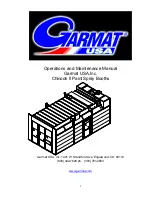
UAD Powered Plug-Ins Manual
- 95 -
Chapter 8: Empirical Labs EL7 FATSO
2nd and 3rd get increasingly harsh and unmusical, and therefore should be
lower in amplitude (<-60 dB) to keep within our line of thinking. Second har-
monic is considered to be the warmest and most “consonant” harmonic dis-
tortion.
Warmth
Processor
High Frequency Saturation
This circuit is meant to simulate the softening of the high frequencies that oc-
curs with analog tape. Basically, as the Warmth is increased, overly bright
signals and transients will be quickly attenuated. The time constants are very
nearly instant, so the high frequencies return very quickly after a loud burst.
The Warmth circuit is by far the most complex part of the FATSO. Basically,
it is a very strange high frequency (HF) gain control circuit or HF limiter. It is
very unobtrusive in operation since it gets in and out of the way very quickly.
The desired result is akin to the HF saturation that analog tape exhibits when
the HF amplitude interacts with the tape recorder bias to produce “self era-
sure” of certain frequencies. The nature of the filter allows the corner fre-
quency to move as attenuation occurs.
There is only one control for Warmth but there are other ways to control the
overall action of this circuit. If you do decide to use the compressor, set it up
first because it affects the operation of Warmth. There is heavy interaction be-
tween the compressor and Warmth settings. Perhaps the best way to think of
the settings is as compressor threshold, with 7 having the lowest threshold and
the most Warmth, responding quickly and often to high frequency content.
Just remember that instead of controlling the overall level, the Warmth “com-
pressor” threshold only affects the high frequencies.
The Tranny
Processor
Transformer & Tape Head Emulation
The Tranny circuit (“Tranny” is short for transformer) is a simulation of the ef-
fect of input and output transformers of older devices and adds the low fre-
quency harmonics that characterize analog tape. This is extremely useful on
pure low frequency type tones that don't cut through small speakers. It adds
upper “warm” harmonics to frequencies below 150 Hz, especially those even
lower such as 40 Hz, the low string on a bass guitar, helping it to cut through
on smaller speakers.
















































